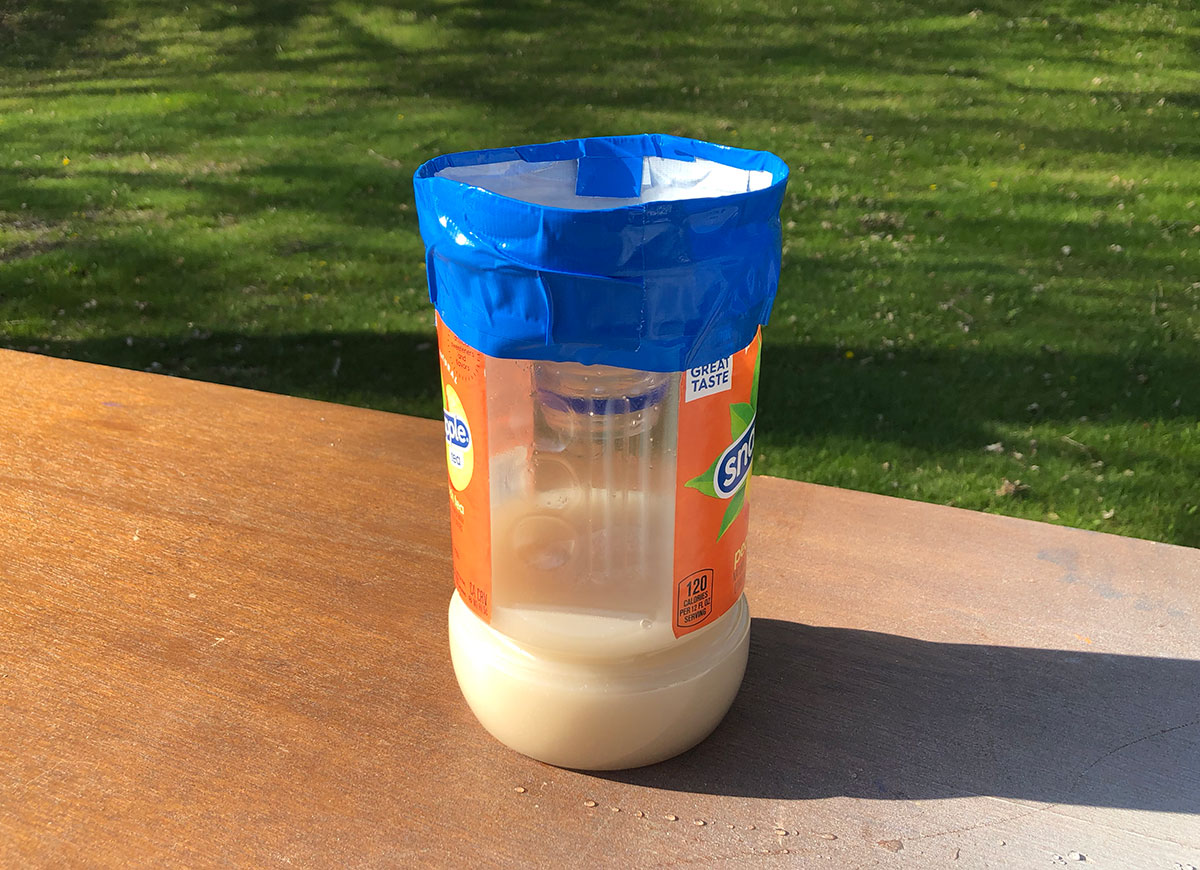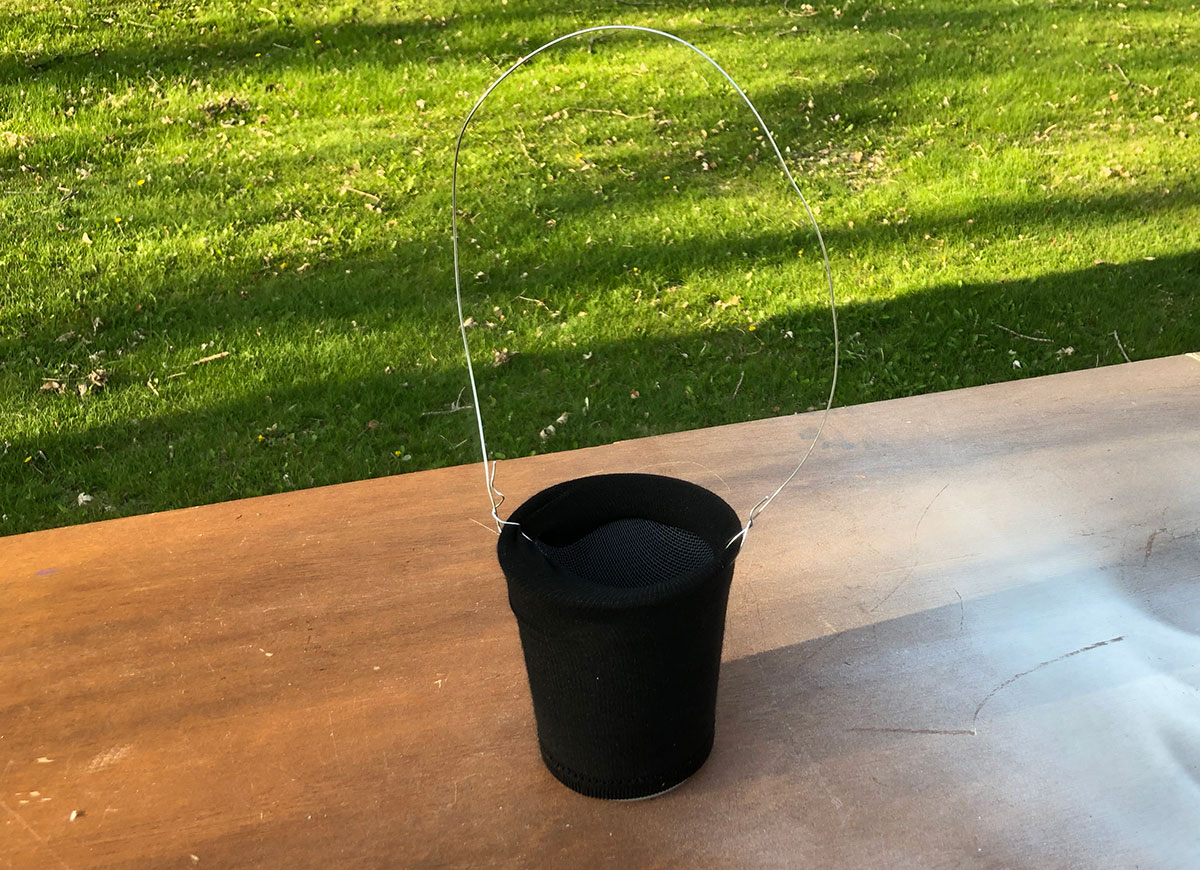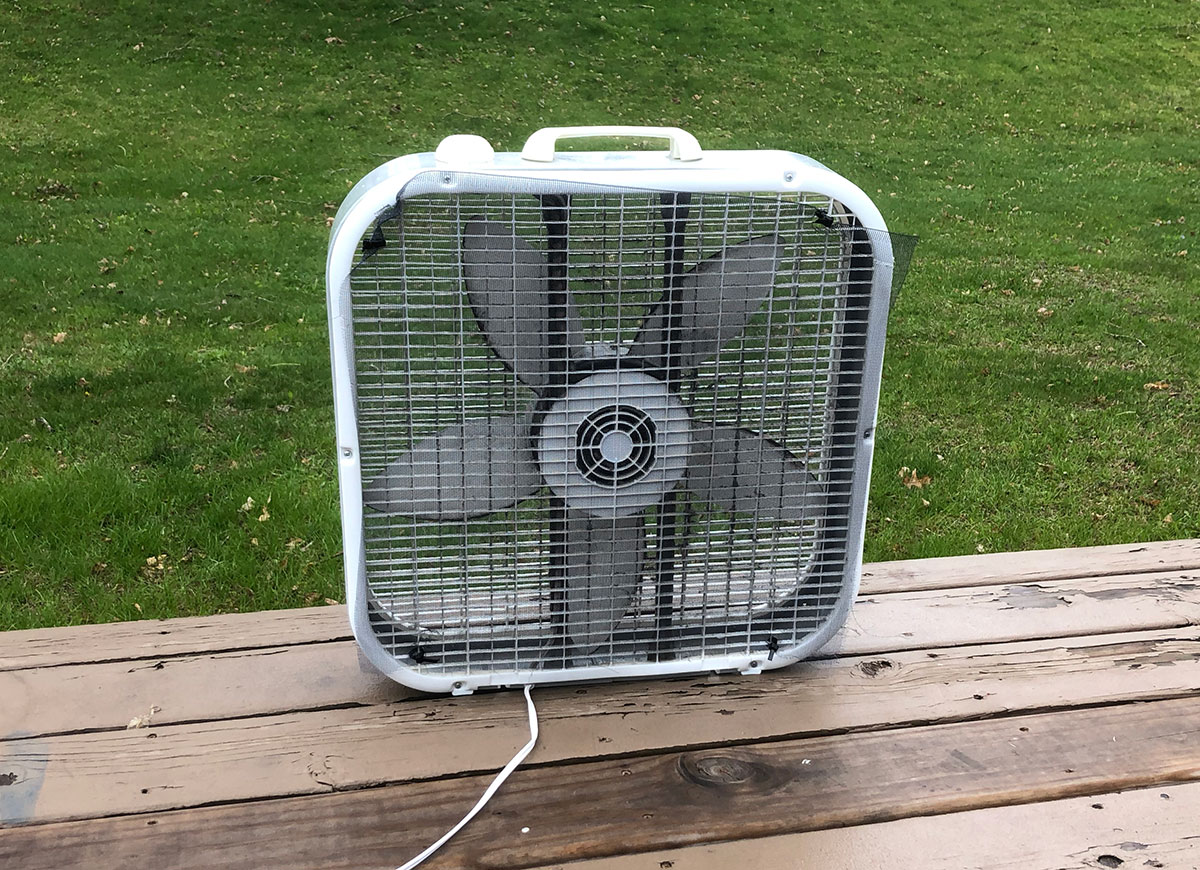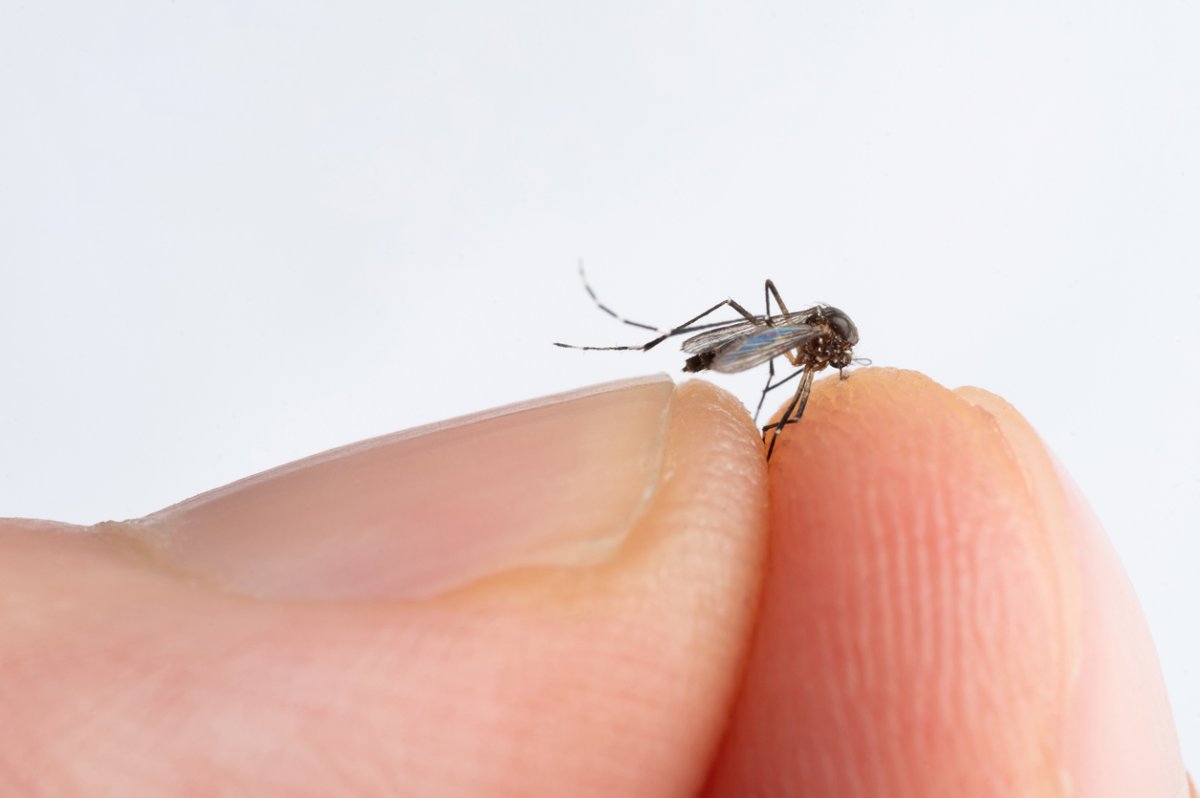We may earn revenue from the products available on this page and participate in affiliate programs. Learn More ›
Itchy bites make mosquitoes a nuisance in any setting, but they’re especially aggravating when they violate your backyard. And because some species transmit human pathogens, including West Nile virus, malaria, and the Zika virus, these bloodthirsty bugs are more than annoying—they can be a health hazard.
If you want to enjoy your yard without having to bathe in bug spray, you can invest in a commercial mosquito trap or try one of these homemade weapons for outdoor mosquito control, all of which can be made from materials typically found at home.
Ways To Get Rid Of Mosquitoes Naturally

When it comes to mosquitoes, the best defense is a good offense, which is why you want to invite the creatures that prey on mosquitoes to hang out at your place. Swallows, robins, mockingbirds, geese, ducks, and songbirds all feast on the pests.
Dragonflies, too, can consume hundreds of mosquitoes a day, and you can attract them with plants like irises and buttercups. But mosquito enemy number one? Bats. They come out at dusk to devour their favorite dish, and while you might not want bats snuggling in the shutters of your home, you can build a DIY bat house they’ll nest in when they are not out hunting.
Bats are also attracted to such night-blooming plants as datura, yucca, evening primrose, and cleome. Many types of fish and turtles munch mosquitoes as well, but having them in your yard means installing a water source. A fine idea, as long as it’s flowing—but stagnant water is the mosquitoes’ breeding ground.
“The best way you can control mosquitoes at your house is to remove breeding sites,” says Dr. Michael Riehle, professor in the Department of Entomology at the University of Arizona. Specifically, he says, it’s important to address “any standing water that remains for more than a week.”
Our 3 Favorite DIY Mosquito Traps
Despite your best attempts to keep your property well manicured and free of standing water, the pernicious pests still might be honing in on your barbecues and pool parties. To send them packing, create and place one of these tricky mosquito traps outdoors.
1. The Snare Mosquito Trap

SUPPLIES
Cup of hot water
Brown sugar
Yeast
An empty 2-liter bottle or bucket
Mosquitoes are attracted to carbon dioxide, which they perceive as the breath of humans and other mammals. They’ll zoom in to this simple snare, believing they’ll soon be sucking blood, but instead, they’ll meet their doom!
“The CO2 will draw them in. You just need to be careful that you are actually trapping them and not just creating a mosquito beacon to draw in mosquitoes from your neighbors,” Dr. Riehle warns.
To make this home remedy for mosquitoes, you’ll need a cup of hot water, ¼ cup of brown sugar, a gram of yeast, and an empty 2-liter plastic bottle to craft this concoction.
- Cut the bottle in half around its middle.
- Heat the water in a heat-proof container, and then add sugar and let the granules dissolve.
- Once the solution has cooled, pour the mixture into the bottom half of the bottle, and add the yeast to begin the carbon dioxide reaction.
- Remove the cap, flip the top of the bottle upside down, and push it into the bottom half of the bottle to create a funnel. Then tape the two bottle pieces together.
- To increase the homemade mosquito trap’s effectiveness, secure a black sock, cloth, or piece of paper around the outside of the assemblage.
Set the yeast mosquito trap above ground in a shaded part of the yard, away from gathering spaces. The mosquitoes will be attracted to the CO2, prompting them to enter through the funnel, where they’ll then drown in the water. Empty the bottle and add more mix every 2 weeks or as needed.
2. The Ovitrap Mosquito Trap

SUPPLIES
Two plastic cups or repurposed, clean plastic container
Black paint (if using a light-colored cup)
Thin-gauge wire
Window screening (can be recycled or scrap)
Duct tape
Scissors
Old black sock
Ovitraps are dark, water-filled containers that imitate the breeding environment that mosquitoes favor, only this nursery is actually a morgue. When females lay their eggs on the container’s sock-lined rim, the larvae will fall through the screen and into the water.
Once fully grown, they will be too big to crawl back through the mesh and will be stuck beneath the screen—to bother you and breed no more!
Dr. Riehle warns, however, that “you need to dump and replace the water at least weekly or you will be producing mosquitoes rather than eliminating them. Adding BTi (the most common active ingredient in mosquito dunks) would also help kill any larvae that emerge from the eggs,” she says.
To make this outdoor mosquito trap, you’ll need a plastic cup or container (a rinsed-out pint of yogurt, perhaps), thin-gauge wire, mesh (from an old screen, maybe), some duct tape, and an old long black sock.
- To make the trap, cut one cup in half, saving the top half for the top of your trap.
- Place the top half inside the other cup and mark where it reaches. Make drain holes on each side below that mark by pinching the cup and cutting a small triangle to allow extra water to drain out of the trap if it gets too full.
- Paint the outside of the large cup and the inside of the trap’s top black. Spray paint works well for this.
- Once the paint has dried, cut a piece of window screening and use tape to cover the smaller side of the trap’s top with the screening.
- Cover the drainage holes by taping window screening over them so that the water can exit, but mosquitoes can’t.
- Fill the base of the trap about ¾ full with water.
- Put the trap top on and the screen side down.
Place the mosquito catcher in shaded places away from wind and sun, by trees and shrubs.
3. The Fan-Favorite Mosquito Trap

SUPPLIES
20-inch metal frame box fan
Metal mesh
Zip ties or glue
A hole puncher (optional)
The mosquito fan trap has many iterations, but the simplest uses a 20-inch metal-frame box fan, metal mesh (the kind used on window screens), and magnets strong enough to secure the screen to the fan’s frame.
- Cut holes or use a hole puncher to create inserts for the zip ties to feed through.
- Attach your mesh screen tightly to the back of the fan with the zip ties (or glue). If you haven’t any metal mesh handy, mosquito netting or tulle fabric will work just as well.
- Rotate the fan so it’s blowing away, and the side that pulls air is facing forward.
Place the fan near places mosquitoes inhabit, plug it in (if at a campsite, use your portable generator), and turn it on. Mosquitoes will investigate—drawn, as theory has it, by the sound and/or motion, and get trapped in the mesh/netting. They’ll eventually dry out and die, but if you notice any survivors, mist the mesh lightly with a 50-50 blend of 70 percent isopropyl alcohol and water to finish them off; just take care not to drench the fan’s motor.
FAQs
If you’d like more information on how to keep mosquitoes from making you miserable, check out the answers to these frequently asked questions.
Q: What is the best way to catch mosquitoes?
Try any of the mosquito traps detailed above to catch mosquitoes. Be sure to locate them in shady areas, out of direct sun and wind, and away from places where family and friends gather.
Q: Do vinegar mosquito traps really work?
The construction of such a mosquito trap is similar to the bottle snare described above, but instead of yeast, it uses vinegar. Probably because there’s no CO2 involved to lure the mosquitoes, these mosquito traps have proved ineffective, disappointing folks who’ve tried them.
Q: What smells do mosquitoes hate?
Some of the smells that you’d likely find a turn-off, like sweat and body odor, are tempting aromas to mosquitoes. But you can deter them with various essential oils that you consider pleasant. These oils include lavender, tea tree, lemon eucalyptus, cinnamon, neem, and soybean. Citronella is such a popular mosquito-repelling oil, it’s sold in candle form for this purpose. Mosquitoes also dislike garlic; if it’s plentiful in your diet, they may not want to drink your blood.
Final Thoughts
Warm weather fun needn’t be spoiled by mosquitoes. Plan on using these traps and techniques before your next backyard bash or chill session, all of which are less noisy than bug zappers. Check container mosquito traps weekly to ensure that they’re still in place; empty and replace ingredients as needed.
